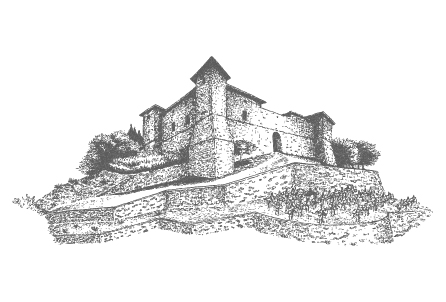RESIDENCE OF WINE

THE FOREST: THE BEAUTY OF BALANCE
A home to preserve the culture of the vine
Forests and hills, beaches and cliffs, flamingos and wild boars: the story of Maremma is that of a territory where humans and nature have learned to coexist in balance. The robust and wild heart of Tuscany, Maremma boasts a rich environmental heritage where humans have approached the natural world in complete harmony with the landscape and the biodiversity that characterize the surrounding flora and fauna.

THE NATURE OF MAREMMA
Forests and Hills, Beaches and Cliffs, Flamingos and Wild Boars
Indeed, there are numerous protected natural areas in Maremma, such as the WWF oases of Lake Burano, the Orbetello Lagoon, and San Felice, representing a vision of life in harmony with nature. Covering a total area of 5,000 square kilometers, Maremma consists of a central inland part corresponding to the province of Grosseto, reaching to the slopes of Mount Amiata and the Metalliferous Hills, and extending to the middle Ombrone Valley. On the coast, it includes the territory between Piombino and the Val di Cecina. While predominantly flat and alluvial, Maremma also features forests and hills that extend to the Tyrrhenian Sea. Here, the Mediterranean maquis replaces fields and pastures, alternating beaches, cliffs, wetlands, and pine forests. It’s a flourishing and diverse landscape inhabited by a rich fauna. On the waters, you’ll encounter large birds like herons and flamingos, while inland, there are roe deer, fallow deer, porcupines, badgers, foxes, and various reptile species. Cows, bulls, and horses are genuine celebrities of the Maremma territory, and of course, the legendary wild boar is among them, known for its tenacity and strength (hence, one of the main symbols in local heraldry), but especially for its highly-prized meat, a central component of traditional local butchery. Off the coast, Maremma hosts what can be considered a true natural paradise. With a geological history of over 200 million years, the seven islands comprising the Tuscan Archipelago and their waters are the largest marine park in Europe, with fully protected zones. Elba and Giglio, Capraia and Montecristo, Pianosa, Gorgona, and Giannutri feature Mediterranean flora and fauna, harboring rare animal species like the Corsican Seagull and Cestoni’s Free-tailed Bat






TUSCANY IN MAREMMA
Maremma as the driving heart of a millennia-long history
Inhabited since prehistoric times, the Maremma territory saw the rise of the Etruscans from the 8th century BC, the earliest protagonists of a land whose wealth led to prolonged disputes. Here, essential aspects of a millennia-long history are encapsulated, which captured flows of cultures and peoples that fostered a civilization with Landscape as one of its defining elements. It is the countryside that preserves the cultural roots of Maremma, where an authentic knowledge and the experience of generations who have nurtured the civilization of the vine and wine, as well as beauty, authenticity, and spirit, are still transmitted today. Skillful merchants, extraordinary craftsmen, and early proponents of viticultural knowledge, the Etruscans established a refined and complex society that would leave indelible marks over time, profoundly influencing even the Romans. Both immaterial and material traces are evident, as seen in the remains of the ancient cities of Roselle and Vetulonia, not far from Grosseto, which house artifacts from the necropolises of this people.
Following the lengthy Roman rule, which inherited significant cultural traits from the Etruscans, the Maremma was predominantly governed by the Aldobrandeschi during the Middle Ages, a noble comital family whose legacy can still be found in the towers, fortresses, fortifications, and villages that continue to harmoniously coexist with the landscape. Exceptional examples include the Fortresses of Talamone, Orbetello, and the marvelous hamlet of Sovana. The Medici and later the House of Lorraine also left their mark with impactful architectural and environmental initiatives, such as the Walls of Grosseto and various land reclamation works. It’s rare for a road in Maremma not to offer the visitor the sudden spectacle of an ancient and authentic testimony, leading them on an intense ethno-anthropological journey back in time, amidst castles, abbeys, monasteries, and cathedrals, allowing them to identify some of the most original characteristics of their civilization.





